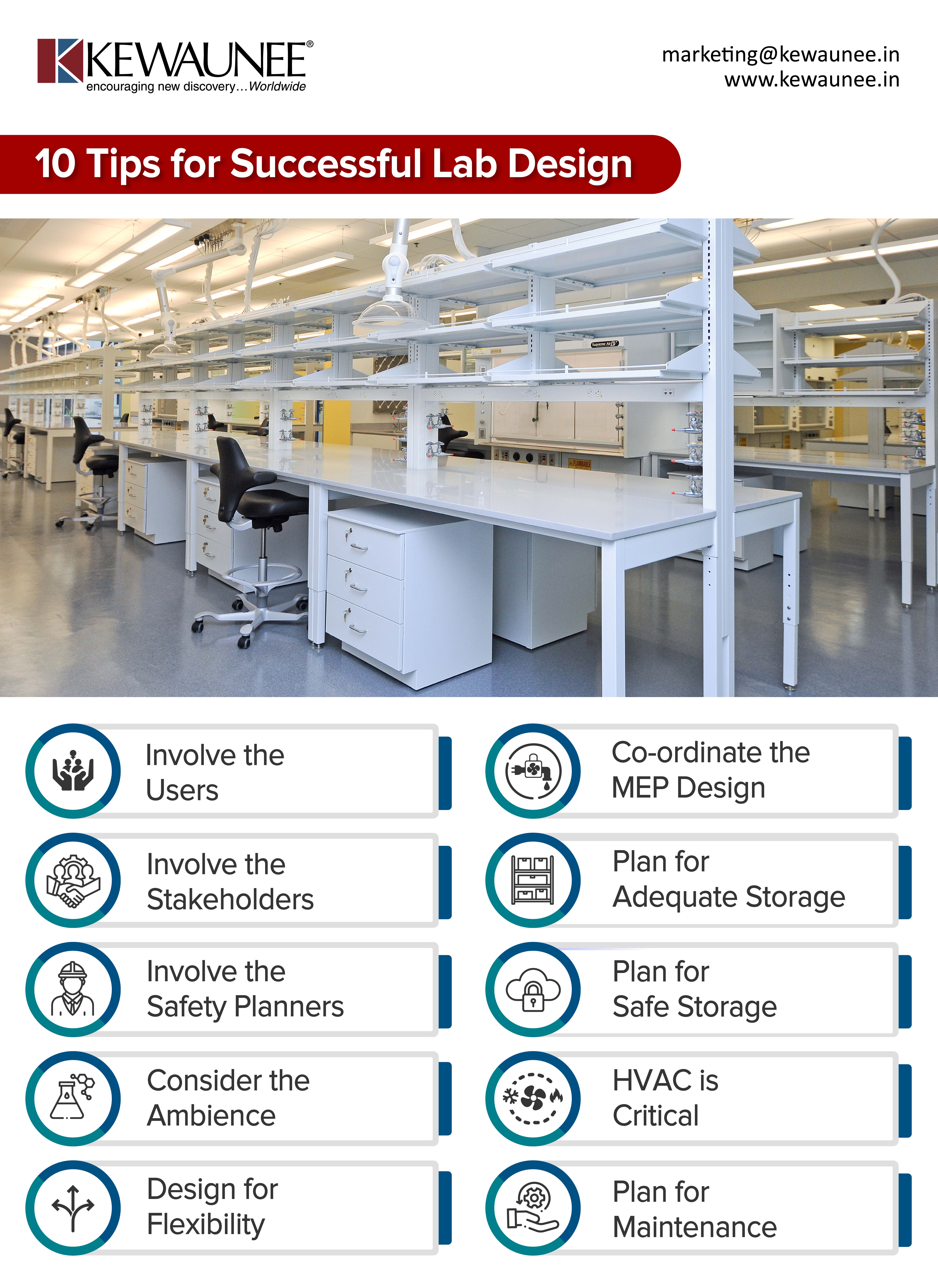10 Tips For Successful Lab Design
A laboratory is a place where significant discoveries take place. Like any other business entity, a laboratory can also achieve its goal and success. The first step towards the success is the laboratory design.
Unlike design of a regular workplace, the design of laboratory is complex and needs extra care and attention to details. The reason is, depending on the research and experiments conducted, a laboratory deals with toxic gases and liquids, hazardous solids, unstable chemicals, ionizing and non-ionizing radiation sources, and biohazards.
Therefore, the design of the lab must account for ways to prevent hazards and ensure the safety of the employees inside. However, there are many other considerations of safety, which will help a laboratory and its residents achieve their goals. Let’s explore the key design considerations for a successful lab in this blog.
1) Involve the users
First, start with the users in determining their requirements. A safe and productive lab design factors in requirements such as how the lab will be used, the number of people working, the nature of experiments and the user roles, and space considerations. All these aspects impact the lab user’s productivity.
2) Involve the stakeholders
Involve the stakeholders and the seniors early on. This helps balance the requirements against the budget without compromising on the critical aspects of safety and productivity.
3) Involve the safety planners
You got to ensure that the safety systems – fire suppression systems, smoke detection systems, and outlets, fume hoods, etc – are considered and in place. The safety planners and the designers must collaborate to factor safety into the design.
4) Consider the ambience
Depending on the experiments and the research, the ambient working conditions must be incorporated into the design. Ambience includes room temperature, internal temperature, and humidity control systems for the laboratory and the working space. Some lab equipment generates an excessive amount of heat at the time of use. So, adequate cooling arrangement must be made to protect the health of people and equipment.
5) Design for flexibility
The lab should have flexibility. This means some equipment may move and travel in the future or be entirely removed from the lab. To the extent possible, incorporate modular and flexible design of furniture and lab space.
6) Coordinate the MEP design
It is essential for electrical, plumbing, and mechanical engineering and design activities to be well coordinated. Changes at later stages may prove extremely costly.
7) Plan for adequate storage
Typically, the space constraints in a lab result are due inadequate space for storing lab equipment, fast growth, and inflexibility. During the design, the lab size should be determined adequately by keeping in mind the type and number of lab users, lab equipment, size of the bench, and future needs.
8) Plan for safe storage
Storing chemicals in the right way is essential for eliminating the potential risk. Hence, before designing, the laboratory planner should consult with lab managers and users to know the gases and chemicals used in the lab, and their storage should be planned accordingly. You need to ensure that the hazardous chemicals are stored in a separate chamber with fire-resistant doors and locks.
9) HVAC is critical
For lab safety, pressurisation, and containment, the person designing the lab should work closely for establishing coordination between the HVAC and the fume hood control systems. In addition to fume hoods, local ventilation above workbenches may be required. There are some chemical reactions during the manufacturing process which are highly suffocating or poisonous for the human skin and eyes that are released in trace amounts. Such trace amounts can only be evacuated from the facility immediately if there is a ventilation above the workbenches.
10) Plan for Maintenance
Maintenance of the facility during operations is not only a critical safety aspect but helps prolong the life of the laboratory. Adequate care must be taken in the design for proper segregation of hazardous waste, drainage, and recycling.
Laboratories that are well-designed with attention to detail, lead to a productive workplace and positively boosts the health and safety of users. The lab becomes successful through extensive planning, coordination, and collaboration between the design team and stakeholders.
Kewaunee is a world leader in turnkey laboratory design and construction projects. Talk to us today before you start your next lab project.
Comments are closed.











